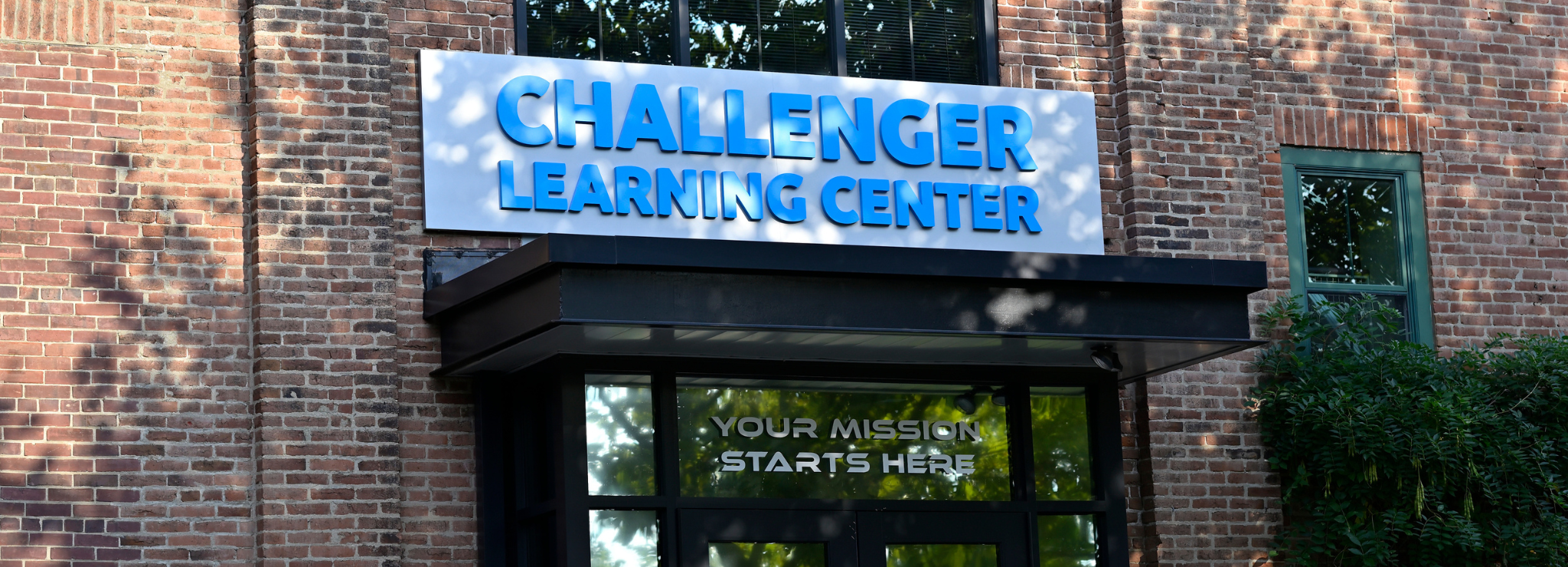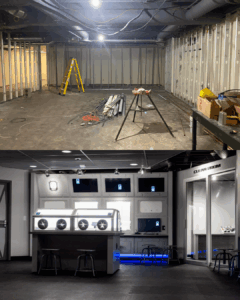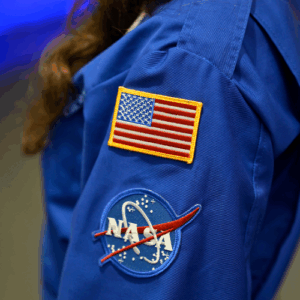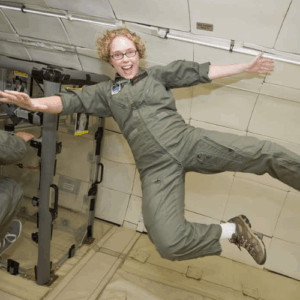Blogs | 7.17.2025
What It Takes to Build a Challenger Learning Center

Every Challenger Learning Center begins with a dream.
 Sometimes, it starts with an educator looking to bring hands-on STEM education to local students. Other times, it’s a community college administrator envisioning a new kind of space for science and imagination. Or maybe it’s a city leader imagining a new chapter for developing the town’s workforce and equipping the next generation with the skills they need to succeed.
Sometimes, it starts with an educator looking to bring hands-on STEM education to local students. Other times, it’s a community college administrator envisioning a new kind of space for science and imagination. Or maybe it’s a city leader imagining a new chapter for developing the town’s workforce and equipping the next generation with the skills they need to succeed.
Whatever the origin, the story begins with someone asking a simple but powerful question: What if we brought a Challenger Learning Center here?
That question is often followed by a flurry of curiosity, excitement, and, yes, questions. What would it take? Who do we need to talk to? How much does it cost? Is this even possible?
That’s when they find someone like Jennifer Maddox, our Challenger Learning Center Navigator. “I have the privilege of working alongside local leaders to help them bring their vision to life,” she says. “Each Center is unique, just as every community is unique, but the heart of it is always the same: creating a place that inspires kids to reach for the stars.”
When Communities Say “Yes”
 Before joining Challenger Center’s headquarters team, Jennifer was part of the group that established the newest Challenger Learning Center in Northeast Alabama. That project began just a few years ago when a small, passionate group of local leaders came together around a shared dream. “The secret sauce was a motivated team who said yes, and gave their time, their talents, and their networks to make it happen,” she says. “And now, I have the joy of helping other communities find their own recipe for success.”
Before joining Challenger Center’s headquarters team, Jennifer was part of the group that established the newest Challenger Learning Center in Northeast Alabama. That project began just a few years ago when a small, passionate group of local leaders came together around a shared dream. “The secret sauce was a motivated team who said yes, and gave their time, their talents, and their networks to make it happen,” she says. “And now, I have the joy of helping other communities find their own recipe for success.”
In every community, the early conversations revolve around the same two challenges: funding and finding the right space. Building a Challenger Learning Center is a significant financial investment, and communities have to decide whether to invest in a new building or renovate an existing space to accommodate the simulator. Both options have benefits and challenges to consider.
But they aren’t doing it alone. Jennifer explains, “We’re there to walk beside them, helping them navigate the process and adapt it to their community’s needs.” That includes supporting these visionaries while they consider everything from fundraising to educational networking to staffing and operational costs.
The Simulator Takes Shape
 Site selected? Capital raised? Community engaged? Operational plan in place? That’s where Bill Seilnacht comes in. As the Senior Director of Network Support with nearly two decades of experience at Challenger Center, he has overseen dozens of Center builds across the country. His role? A little bit engineer, a little bit designer, a lot of problem-solver. When he first walks through a potential space, he’s thinking about the flow of the building—what he calls the “breathability.”
Site selected? Capital raised? Community engaged? Operational plan in place? That’s where Bill Seilnacht comes in. As the Senior Director of Network Support with nearly two decades of experience at Challenger Center, he has overseen dozens of Center builds across the country. His role? A little bit engineer, a little bit designer, a lot of problem-solver. When he first walks through a potential space, he’s thinking about the flow of the building—what he calls the “breathability.”
“I build the space in my head as I walk through it,” he explains. “Every building is different. But every one is an opportunity to do something exciting.”
Bill balances the technical demands of the simulator with the imagination needed to create an unforgettable student experience. Some spaces get dramatic lighting and glowing transport rooms; others have airlocks or hidden effects that bring the simulation to life. Every detail is intentional, even the ones no one notices.
“We’ve made last-minute changes to preserve millwork or adjust lighting without altering the look and feel of the room,” he says. “Those are the things no one sees, but it’s all a part of the magic.”
That “magic” is about more than equipment. Every detail—from a glowing transport room to the hum of mission control—is designed to transport students into a world of discovery. “We want the experience to feel exciting, immersive,” Bill says. “Even within budget constraints, we find ways to bring the ‘wow factor.’”
Training for Takeoff
 Once the design is finalized and the funding secured, construction begins. As the simulator is built, another process unfolds in parallel: preparing the local team to run the Center.
Once the design is finalized and the funding secured, construction begins. As the simulator is built, another process unfolds in parallel: preparing the local team to run the Center.
That’s where Lisa Vernal and the Center Relations team step in. “We take a hands-on, collaborative approach,” says Lisa, Challenger Center’s Vice President of Communications and Center Relations. “From the very beginning, our goal is to make each new team feel confident, prepared, and connected. It’s a true partnership.”
Training is multi-phase: Teams go through a mix of individual coaching, virtual learning, observations at other Centers, and hands-on practice in their own new simulator. Even after launch day, the relationship continues through resource sharing, strategy sessions, and peer-to-peer networking across the Challenger Learning Center network.
Lisa believes this long-term approach is what helps each Center thrive. “We’re not just launching a building,” she says. “We’re creating a place where students can discover new skills, build confidence, and see themselves in roles they may never have imagined.”
Inspiring the Next Generation
 For many students, their first mission at a Challenger Learning Center is a turning point. Just ask Dr. Tess Caswell, who flew a mission at the Center in Alaska and is now at NASA, one of the voices linking Mission Control at Houston to the crew of the International Space Station. Or Taylor Young, who got his start at a Center in Paducah, Kentucky, and now works as an engineer improving water systems in his community.
For many students, their first mission at a Challenger Learning Center is a turning point. Just ask Dr. Tess Caswell, who flew a mission at the Center in Alaska and is now at NASA, one of the voices linking Mission Control at Houston to the crew of the International Space Station. Or Taylor Young, who got his start at a Center in Paducah, Kentucky, and now works as an engineer improving water systems in his community.
“These stories remind us why we do this work,” Jennifer says. “When a student walks into the simulator, they’re not just pretending to be an astronaut. They’re stepping into a new version of themselves.”
That’s also Bill’s favorite moment. After months of design, fabrication, and installation, nothing compares to seeing students experience the space for the first time. “The awe, the excitement on their faces; it makes all the hard work worth it.”
The story doesn’t end there. Each new Center becomes part of a larger network, connected by a shared mission: to honor the legacy of the Challenger STS-51L crew by inspiring the next generation through hands-on, immersive STEM learning.
It takes years of planning and a village of collaborators—from engineers and educators to fundraisers, community leaders, and volunteers—to make it happen. But in the end, the impact is undeniable.
As Jennifer says, “Our future scientists, engineers, and astronauts are in middle school today. A Challenger Learning Center gives them the chance to dream big, work together, and believe in what’s possible.”
